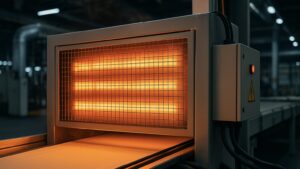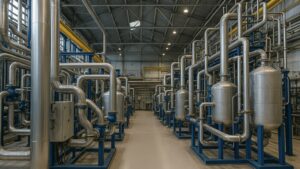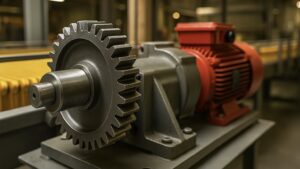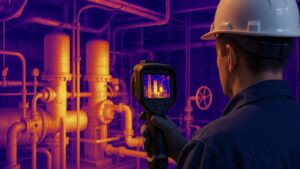The global data centre industry is at an inflection point. With rapid digitalization across sectors, data traffic is expected to grow at a blistering 23% CAGR from 2021 to 2026. To keep pace, data centre workloads could triple over the next 5 years. However, this unprecedented growth would devour electricity if existing facilities remain constrained by outdated cooling methods. Moreover, already consuming over 200 TWh annually, data centres could end up guzzling as much energy as major industrialized nations by 2030. This makes advanced cooling solutions in data centres necessary.
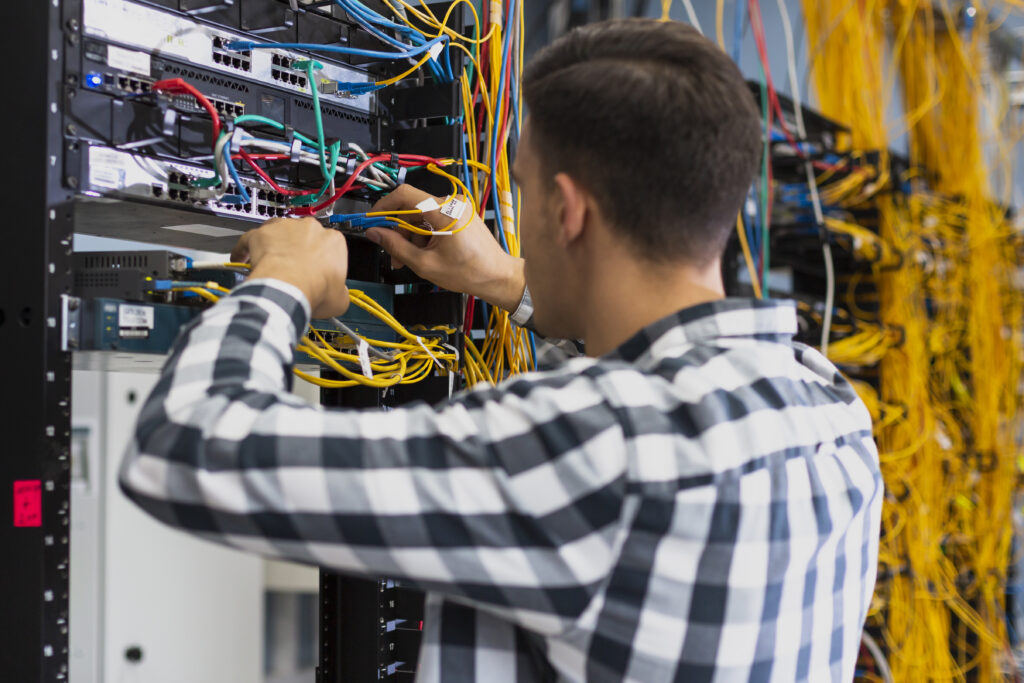
Advanced cooling technologies offer vital respite from this scenario. Innovations like immersed liquid cooling and geothermal heat rejection can eliminate 80-90% of cooling energy usage. By exploring such cutting-edge techniques, operators can sustainably support future workloads. They can also optimize costs. This article will explore advanced cooling solutions in data centres. So, with targeted modernization efforts, the future of data centre cooling can meet soaring data demands without spiraling electricity utilization.
The imperative for advanced cooling solutions in data centres
Traditional data centre cooling architectures utilize simple air conditioning units. Moreover, these have remained largely unchanged over decades. However, air cooling has significant limitations when applied to high-density workloads driving modern data centres. So, its inefficient heat transfer leads to substantial overprovisioning of cooling equipment. As a result, it exacerbates energy wastage.
With rising rack densities and chip powers, air cooling stretches to its extremes. Also, it is unable to extract heat effectively from servers. So, this threatens hardware lifespan and reliability. This is while inflating electricity bills and emissions for data centre owners. Innovative cooling paradigms are mission-critical to escape this spiraling energy crisis. So, by shifting certain workloads to advanced liquid or free cooling techniques, operators can sustainably support emerging digitalization trends.
Liquid Cooling
Liquid cooling leverages water or specialized coolants like dielectric fluid to transfer heat away from servers. This enables remarkably higher heat capture compared to air. It also translates to 5-10 times greater cooling efficiency. One of the best advanced cooling solutions in data centres has rapidly evolved from basic rear-door heat exchangers to fully immersive systems. This is with cold plates attached directly over processors.
Direct contact methods like cold plates demonstrate exceptional performance but involve complex installation and maintenance. Encapsulated chassis with self-contained liquid loops simplify deployment. This is while still achieving drastic efficiency gains from high-density workloads. So, this modular “chips submerged in coolant” architecture presents a versatile middle-ground between performance and practicality.
With liquid cooling, data centre owners reduce cooling energy usage by 80-90% compared to air conditioning. This delivers exceptional sustainability advantages. It also unlocks previously unattainable rack power densities beyond 50 kW. Furthermore, liquid’s superior heat removal enables safer operating temperatures for maximized hardware performance and longevity.
However, one of the most advanced cooling solutions in data centres necessitates supplemental air cooling for lower-density peripherals while retrofitting existing servers is costly. Migration roadmaps should focus first on high-performance computing systems. This is before expanding the liquid’s footprint based on workload needs. With CRAC units still required as backup, data centres cannot eliminate air cooling entirely. But the selective deployment of liquid technologies paves the path in the future of data centre cooling for transformative efficiency gains.
Free Cooling and Economization
Where climatic conditions permit, free cooling solutions introduce outside air into data centres. Furthermore, it leverages ambient environments for “free” cooling without any refrigeration. This economizer mode enhances sustainability metrics, with reduced electricity driving chiller units. Cold and dry weather patterns also enable a more liberal intake of external air. Moreover, humidity control technologies allow free cooling even in warmer climates.
Building management systems modulate air intake based on external climate measurements. It helps to maintain equipment reliability. Additionally, state-of-the-art predictive analytics optimizes control. This is by forecasting ambient conditions days in advance using AI. As a result, it maximizes hours spent in economizer mode. Furthermore, advancements like smart water atomization adjust inlet humidity actively. This is during free cooling without internal dehumidification, improving airside efficiency.
Containment Systems
Effective air cooling requires clear hot-cold aisle separation. It prevents recirculation and short cycling. Containment systems close and seal hot aisles through physical barriers. So, it forces hot server exhaust air directly into CRAC intakes for reliable heat removal. As a result, this prevents contamination of cold aisles. It also lowers average inlet temperatures substantially while isolating supply paths. This makes it one of the most effective advanced cooling solutions in data centres.
Containment enclosures around high-density zones essentially create “mini-data centres”. It enables conventional cooling technologies to support cutting-edge servers. Some modern solutions even allow liquid cooling only for contained racks rather than entire facilities. So, this focused deployment concentrates capital costs while minimizing disruption. Furthermore, containment technologies enhance airflow efficiencies sufficiently for existing cooling systems to manage escalating rack densities above 25kW.
Geothermal Cooling
While most cooling equipment rejects facility heat into ambient environments, geothermal solutions transfer this thermal energy into underground soil or bodies of water. This enables substantially higher heat absorption thanks to the immense volume of the earth, reducing electricity consumed in heat rejection. Cooling towers transmit facility heat deep underground through pipes filled with water. Additionally, the circulating fluid absorbs soil warmth before transferring heat via heat exchangers to drive free cooling.
This geo exchange mechanism minimizes compressor usage for refrigeration. It also saves tremendously on energy expenses. So, geothermal cooling can entail high upfront costs for earth drilling and heat rejection piping infrastructure. However, many data centre owners strategically leverage their geographic locations near oceans, lakes or rivers as ready heat sinks. As a result, this unlocks geothermal advantages without elaborate field construction requirements.
The possibility of leakage from below-ground pipework does impose reliability risks for operators. Therefore, geothermal deployments warrant close long-term monitoring. It helps to prevent performance degradation or failures. But as sustainability reporting gains prominence, geothermal merits consideration where installation costs and region-specific terrain allow. Moreover, one of the top advanced cooling solutions in data centres exceptional efficiency statistics validate investments through immense energy savings over time.
To sum up
The data centre industry is at a crucial point right now. There are exciting new technologies like artificial intelligence (AI) and the Internet of Things (IoT) that can bring a lot of innovation. Still, they also use a ton of electricity, which isn’t great for the environment. We don’t expect the growth of data-driven technologies to harm the planet by using too much energy.
Luckily, there are advanced cooling solutions in data centres, making them more efficient. Things like liquid cooling, geothermal heat rejection, and other advanced techniques are being explored. These methods can help data centres grow without using excessive energy.
To learn more about these advanced cooling solutions in data centres and to create plans for making data centres more energy-efficient, there’s an event called the Net Zero Data Centre Summit on February 1-2, 2024. This event will bring together experts in cooling technology, data centre owners, regulators, and sustainability experts. They’ll discuss different viewpoints and come up with ways to make digital technologies more eco-friendly.
If you’re interested in the future of data centres and want to be part of the solution, attending the Net Zero Data Centre Summit is a great idea. You’ll get to hear about the latest developments and take part in workshops to solve real-world problems. As the industry looks for new ways to meet the growing demand for digital services while being environmentally responsible, events like these are more important than ever. Make sure you take advantage of it!

